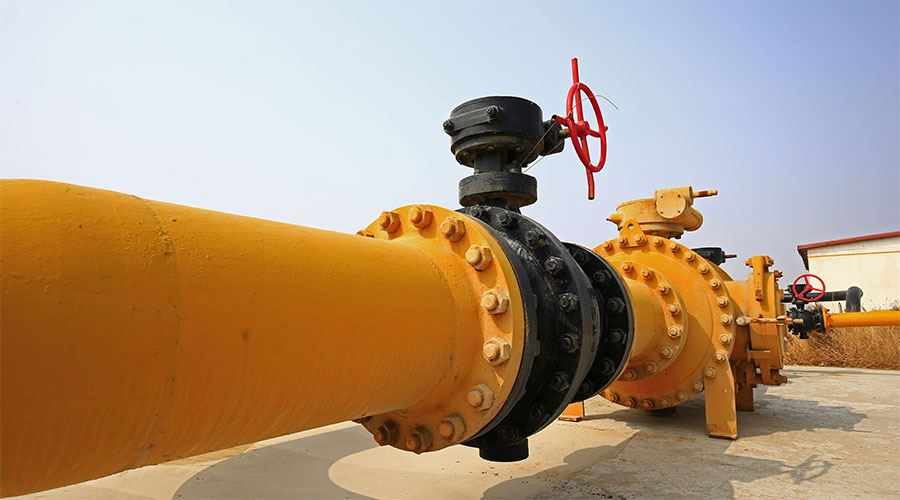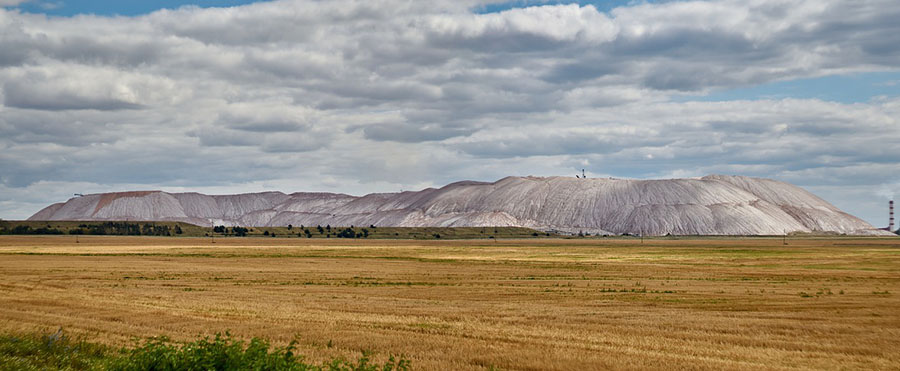TICKERS: AAA; ALLRF, CNE, DO, ENB, XOM, , KRN, NBL, PBR; PETR3, POT, ROSNS, RDS.A; RDS.B, TGP, RIG; RIGN, NPK; AMHPF
Amine Bouchentouf: Offshore Oil Key to Future Supplies
Source: Zig Lambo of The Energy Report (10/6/11)
 Despite the risks and unfavorable public opinion associated with offshore drilling, the truth remains that the keys to unlock the planet's vast remaining oil resources lie beneath ocean floors, in places like the Gulf of Mexico, Brazil and even the Arctic. In this exclusive interview with The Energy Report, noted commodities expert Amine Bouchentouf tells us why he likes the prospects for oil explorers and producers and how the potash business is fueling food production for a growing world.
Despite the risks and unfavorable public opinion associated with offshore drilling, the truth remains that the keys to unlock the planet's vast remaining oil resources lie beneath ocean floors, in places like the Gulf of Mexico, Brazil and even the Arctic. In this exclusive interview with The Energy Report, noted commodities expert Amine Bouchentouf tells us why he likes the prospects for oil explorers and producers and how the potash business is fueling food production for a growing world.
Amine Bouchentouf: I started investing in commodities around the year 2000, and in 2005 we saw an explosion of products for retail and institutional investors covering the commodities markets. In conjunction with that, I also noticed a lack of information for investors about commodities. That's how Commodities for Dummies was born; it's a one-stop guide for investors looking to get exposure to commodities. Why the "For Dummies" series? I felt it's the Walt Disney of guide books: helpful, easy-to-understand and trusted by everyone. Since I wanted to provide investors with insightful, unbiased and trustworthy advice on different commodities, it made a lot of sense to partner with the series. Oil, natural gas, coal and fertilizers are all part of the commodities that I cover in-depth in my book.
The first edition came out in 2007 and a second edition this year. The book has done extremely well and is really a testament to the growing demand for our industry and for hard assets in general.
TER: Concerns about global population growth and demand for higher-quality food in developing economies have made the fertilizer market a hot topic. What should the average retail investor know about this sector?
AB: The fertilizer space is extremely interesting. If you want to get the broadest exposure to agribusiness then you have got to look at the fertilizer space, which gives you exposure to everything from coffee and orange juice to cattle and corn. The United Nations is predicting a population explosion between now and 2050. With that comes a natural rise in food demand. As we're increasing available acreage to produce grains and livestock, we need fertilizers to increase yields and make larger-scale agriculture possible in hard-to-farm climates. The fertilizer market was relatively weak 10 years ago, but we've since seen prices start to go sky-high in response to increased demand.
If you want a long-term play in hard assets, the fertilizer market is a great way to get exposure to the commodity and agribusiness story. I've been looking at the space for a long time and I first recommended Potash Corp. (POT:TSX; POT:NYSE) when it was $12 a share. Had you followed my recommendation you would be sitting on returns of 420%. Now I'm in the process of looking for the next Potash Corp. Which company is going to provide me with that kind of explosive growth? There are certainly a few candidates out there. Allana Potash Corp. (AAA:TSX; ALLRF:OTCQX) is very interesting. The company has operations in Ethiopia, which gives you a unique access point to Africa, the Middle East and Southeast Asia—some of the world's fastest growing economic blocks. You'd be surprised to know that the infrastructure in Ethiopia is world-class, with modern port, railway and road infrastructure. In addition, the mining laws are very friendly. Finally, the operating costs are low since the potash deposits in Ethiopia are near the surface, only about 100 meters (m) from the surface.
Another company worth a look is Karnalyte Resources Inc. (KRN:TSX). This is an exploration and development company that has potential to build a 2 Mt./year potash facility. It has very strong industry fundamentals and an experienced management team. It can provide you with a good solid exposure to this space.
TER: Where are they located?
AB: They're up in Saskatchewan with over 85,000 acres of property. Their Wynard Carnallite project is an exploration and early stage pre-development property with a main zone of carnallite and sylvinite, which are minerals containing potassium. The attractive thing about this project is that they will be using what is called "solution mining," which involves pumping a fluid into the mineral deposit through a drilled well. The carnallite mineral containing the potassium dissolves in this fluid to form a brine solution, which is pumped back to the surface. The potassium and magnesium minerals are then recovered from the solution and processed. Compared to conventional mining methods, this mining process has lower capital costs, shorter time to production, and lower environmental impact.
TER: Have any other companies in that field caught your eye?
AB: One of the best places for agribusiness in the world is Brazil. Brazil is essentially the "Saudi Arabia" of food since it has tremendous water resources and fertile land. I've been spending quite a lot of time in Brazil and it's really a spectacular country to invest in. Brazil is currently the world's second-largest importer of nitrogen, phosphates and potassium, the three principal chemicals used as fertilizers. The internal demand market is there and the deposits are there, so it makes sense for companies to exploit the potash resources inside the country.
There are a couple of companies in the Brazilian fertilizer space that are worth looking at. Verde Potash (NPK:TSX.V) is an interesting play. Verde has both conventional potash and thermo-potash projects in the state of Minas Gerais, the greenbelt of Brazil's fertilizer market. They also have developed a new technology in association with Cambridge University in the U.K. to combine potassium with a mixture of salts to create water-soluble potash. If the technology is proven to be economically viable it could create a lot of upside for investors.
Another interesting company is Potassio do Brasil, which is still in pre-IPO mode. It has large reserves in the Amazon region, which shares similar potash characteristics to the world-renowned Saskatchewan basin of Canada. It has mineral rights along 400km in the Amazon basin, close to the 1.1 billion ton (Bt.) Petrobras property, and it also has an active drilling and exploration program. This is a company I'm keeping an eye on.
TER: Oil has been bouncing around in the $80-$100/barrel range for the past year. Where do you think oil is headed, and what opportunities do you see in this space?
AB: Oil is one of my favorite commodities because it is such a global business and it is such a challenging business. Right now I want to see how the situation in Europe develops. At the same time, it's important to look at the demand side. If Europe blows up, what happens to demand from Europe and what are the spillover effects in the United States and China? The demand picture is still robust in emerging markets. China has become one of the big drivers of oil demand growth along with India and the United States. The United States is still the largest consumer of oil in the world. That's an important fact to keep in mind. Supply-side disruption, whether in Nigeria or Libya or wherever else, can really send prices forward. On a macro level, I do think OPEC has done a terrific job of managing expectations and has been able to meet demand in a steady and consistent manner.
As far as specific plays, I'm always looking in the energy/equity space for oil companies that can provide good exposure. The offshore exploration companies offer interesting opportunities. Brazil, for example, announced major discoveries by Petrobras (PBR:NYSE) in its pre-salt basins. This has the potential to catapult Brazil into the top-three holders of oil reserves in the world. The exploration upside can be tremendous. Companies such as Transocean Ltd. (RIG:NYSE; RIGN:SIX), Noble Energy, Inc. (NBL:NYSE), Diamond Offshore Drilling Inc. (DO:NYSE) and Hercules Offshore Inc. (HERO:NASDAQ) can provide significant upside. Noble, for example, is already growing and its day rates are increasing. If you want to get more regional exposure, you can always look at Hercules Offshore, which provides Gulf of Mexico exposure. After the BP Plc. (BP:NYSE; BP:LSE) oil spill, we saw permitting essentially grind to a halt. The federal government had a public relations and environmental nightmare on its hands. So it was not going to move forward with permitting drilling activity in the Gulf of Mexico at that time. Now we're seeing permitting come back to normal levels. It's not quite to pre-BP oil spill levels but it's getting close. A company such as Hercules Offshore, which had made some solid acquisitions in that region, gives you exposure as regulations relax.
Another area that is off the radar screen of investors is the Arctic, which can provide tremendous upside. The U.S. Geological Survey estimates that there may be up to 450 bbl. of oil equivalent in the Arctic, which is like discovering two Saudi Arabias of oil! We saw in September Exxon Mobil Corp. (XOM:NYSE) and Rosneft Oil (ROSNS:RTS), one of Russia's biggest oil companies and one of the top majors in the world, sign an exploration agreement to go up to the Arctic and start a $2.2B exploration campaign. They're expecting to find very, very large reserves up in the Arctic, close to 50 billion barrels (bbl.) of crude, which is just a gigantic number—that's the equivalent of bringing another Libya into the market. Royal Dutch Shell Plc (RDS.A:NYSE; RDS.B:NYSE) has been present in the Arctic for three decades and has some interesting activities there; in fact Shell is set to begin an extensive drilling program in the Alaskan Arctic that could yield some large discoveries.
Another company I like that can give you pure Arctic exposure is Cairn Energy Plc. (CNE.L:LSE). Cairn is a Scottish company that has been active in Southeast Asia for a long time and has had tremendous success there. They've discovered offshore wells near Bangladesh and India and have a proven track record of creating shareholder value. Cairn has now shifted its focus towards the Arctic. This is another exploration and production company that can get that upside Arctic exposure you're looking for.
TER: Are there any other spaces in the market you're watching?
AB: I think the MLP (master limited partnership) space is very interesting. It's not a space that a lot of people understand. As an investor, I like MLPs because they provide you with two things: physical commodity exposure and high yields. An MLP will distribute all of its cash back to its shareholders. It's not uncommon to see MLPs that have yields of 8%, 10% and in some unusual cases as high as 18%. I believe a company such as Enbridge Energy Partners, L.P. (EEP/EEQ:NYSE) is a good way to get MLP exposure. They're in crude oil and natural gas as well as transportation and storage, with really great exposure to the energy basin of North America. I think the company is going to deploy a lot of capital to grow a lot of different projects, especially in the Bakken Shale, which is an area that you have to be in as an investor. I highly recommend investors take a look at Enbridge as an MLP with some solid yields.
Another area I like is the LNG space. I think Teekay LNG Partners, L.P. (TGP:NYSE) is a world-class LNG company. We saw them provide a large cash distribution in the second quarter. Their yield right now is at about 7˝%. In addition, it's acquiring four more LNG carriers between now and 2012. I think these capital expenditure investments are going to generate a lot of cash-flow for the company going forward. Teekay and Enbridge are both solid companies.
TER: What final thoughts do you have that our readers can take away as far as the whole commodity sector and energy in particular?
AB: The energy space is wide and vast. You have to be very selective as to which type of assets you want to be in. You can find some tremendous upside in the mid-cap space as well as in the small caps and the offshore drillers. But, you have to be very, very selective. That said, my forecast for energy, particularly oil, is upward. The supply situation remains very tight and the demand from Asia and emerging markets is rising. If you want to benefit, you have to invest in specific companies.
TER: Thanks for your time, Amine, and the valuable insights you're provided for our readers.
AB: Thanks for having me.
Amine Bouchentouf is a best-selling author and globally recognized expert in the commodities markets. He is the author of the best-seller Commodities for Dummies, (Wiley), which provides factual insight and analysis on energy, metals and agribusiness. Amine's market reports and recommendations are read by over 42,000 investors each month. He is also a founder of Commodities Investors LLC, an advisory firm that advises investors on investment allocations into natural resources. He is fluent in English, French, Arabic and Portuguese and graduated from Middlebury College with a degree in economics. You can follow him on www.commodities-investors.com, www.hardassetsinvestor.com/the-commodity-investor and www.twitter.com/commodityinvst. Please feel free to email him with any inquiries at: amine@commodities-investors.com.
Want to read more exclusive Energy Report interviews like this? Sign up for our free e-newsletter, and you'll learn when new articles have been published. To see a list of recent interviews with industry analysts and commentators, visit our Exclusive Interviews page.
DISCLOSURE:
1) Zig Lambo of The Energy Report conducted this interview. He personally and/or his family own shares of the following companies mentioned in this interview: None.
2) The following companies mentioned in the interview are sponsors of The Energy Report: Allana Potash, Verde Potash, Karnalyte Resources, Royal Dutch Shell, Enbridge Energy Partners and Teekay LNG Partners.
3) Amine Bouchentouf: I personally and/or my family own shares of the following companies mentioned in this interview: Petrobas and Noble. I personally and/or my family am paid by the following companies mentioned in this interview: None.



























































